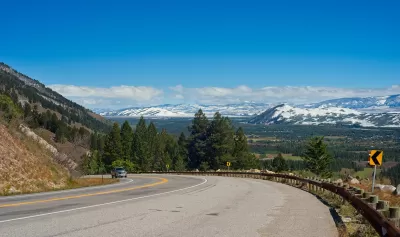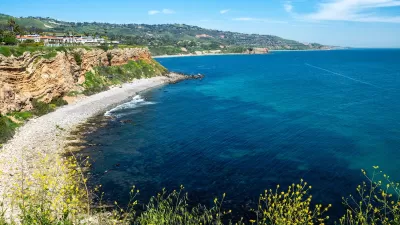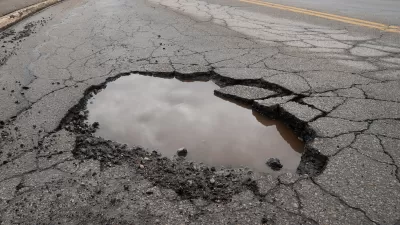Threats to aging transportation infrastructure are putting remote communities at risk of being cut off from essential services.

Mountain highways around the country are facing growing threats from landslides and erosion, putting some communities at risk of being stranded and making commutes dramatically longer for some.
Writing in High Country News, Christine Peterson points to the collapse of Wyoming Highway 22 in Teton Pass in early June, which forced residents to take a 200-mile detour to reach jobs and services. “And Teton Pass is far from the only mountain highway that Western working families depend on. As infrastructure ages and the climate changes, many of these essential routes are more vulnerable than ever.”
With more traffic traveling them every day and changes in weather creating wear and tear, many mountain highways are straining under pressures not foreseen when they were first built. “Historically, highways like Teton Pass could count on solidly frozen ground from December through March, but in recent years, more ground has been thawing earlier, then refreezing and thawing again.”
According to Peterson, any solutions are difficult — and expensive. “Spending millions of dollars to prevent a road collapse is also a tough sell with county and state officials, said Daniel Aldrich, director of the Security and Resilience Studies Program at Northeastern University in Boston. To officials focused on managing tight budgets and pleasing constituents, preventative projects just aren’t sexy.” Aldrich recommends building community resilience and ensuring that affordable housing exists near jobs, “making mountain road closures an inconvenience instead of a crisis.”
FULL STORY: When a landslide blocks your commute

Trump Administration Could Effectively End Housing Voucher Program
Federal officials are eyeing major cuts to the Section 8 program that helps millions of low-income households pay rent.

Planetizen Federal Action Tracker
A weekly monitor of how Trump’s orders and actions are impacting planners and planning in America.

Ken Jennings Launches Transit Web Series
The Jeopardy champ wants you to ride public transit.

New Mexico Aging Department Commits to Helping Seniors Age ‘In Place’ and ‘Autonomously’ in New Draft Plan
As New Mexico’s population of seniors continues to grow, the state’s aging department is proposing expanded initiatives to help seniors maintain their autonomy while also supporting family caregivers.

USDOT Waters Down Self-Driving Car Regulations
The agency is reducing reporting requirements for autonomous vehicles and cars with self-driving features, prompting concern among safety advocates who say transparency is essential to the safe deployment of AV technology.

‘Minnesota Nice’ Isn’t so Nice When You Can’t Find a Place to Live
The Economic Development and Housing Challenge Program can help address the scourge of homelessness among Indigenous people.
Urban Design for Planners 1: Software Tools
This six-course series explores essential urban design concepts using open source software and equips planners with the tools they need to participate fully in the urban design process.
Planning for Universal Design
Learn the tools for implementing Universal Design in planning regulations.
Heyer Gruel & Associates PA
Ada County Highway District
Institute for Housing and Urban Development Studies (IHS)
City of Grandview
Harvard GSD Executive Education
Toledo-Lucas County Plan Commissions
Salt Lake City
NYU Wagner Graduate School of Public Service





























